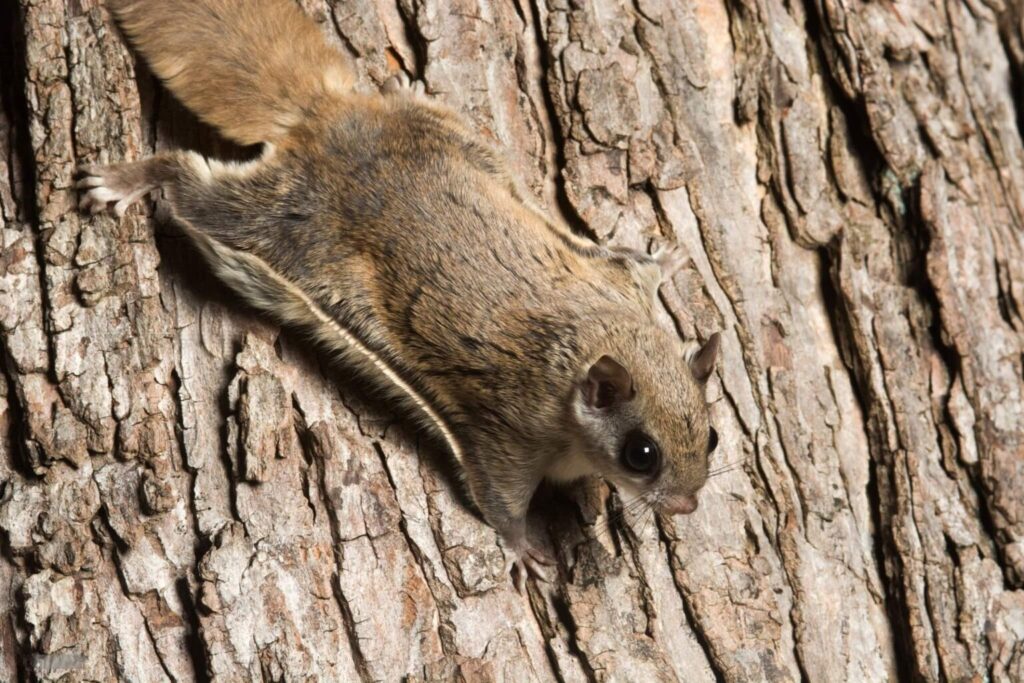In the lush greenery of New Jersey, flying squirrels often goes unnoticed until it becomes a rather unexpected visitor in our homes and businesses. The flying squirrel, a small and agile creature, has become a topic of increasing interest and concern across the Garden State. Known for their distinctive gliding ability, these nocturnal animals are more than just a fascinating example of nature’s wonders; they pose specific challenges for residents dealing with infestations.
From understanding their behavior and habitats to exploring the most effective removal techniques, we aim to provide a comprehensive guide for New Jersey residents grappling with these agile intruders. For those in Essex County, seeking professional help through Essex County wildlife removal services can be a crucial step in safely and humanely managing unwanted wildlife encounters. As we embark on this journey, we will uncover not only the nuisances but also the marvels of these unique creatures and the best practices for coexisting with them in the densely populated landscapes of New Jersey.
Key Takeaways
- Early identification of flying squirrel issues is crucial.
- Humane trapping and professional exclusion services are effective removal methods.
- Sealing entry points is essential to prevent future infestations.
- DIY methods may offer temporary relief but are not a lasting solution.
- Kritter Catchers provides comprehensive and reliable flying squirrel removal services.
Understanding Flying Squirrels
Adapted for nocturnal life, flying squirrels are equipped with large, sensitive eyes and a unique membrane that extends between their limbs, allowing them to glide gracefully between trees. These features make them an extraordinary spectacle in the natural world, but they also lead to specific challenges when these animals venture into human habitats.
While they primarily thrive in forests, feeding on nuts, fruits, and insects, flying squirrels have shown remarkable adaptability. This adaptability often brings them into close quarters with human residences, where they seek shelter in attics or walls. Their presence, while intriguing, can cause structural damage and raise health concerns.
Understanding Flying Squirrels NJ is about recognizing both their ecological importance and the practical challenges of their proximity to human environments. They play a crucial role in seed dispersal, aiding in the health and diversity of New Jersey’s ecosystems. However, their tendency to inhabit human spaces requires careful management to ensure a harmonious coexistence.

Legal and Environmental Considerations
When dealing with Flying Squirrels NJ, it’s crucial to navigate the intersection of legal and environmental considerations. New Jersey, with its diverse habitats and wildlife populations, mandates specific guidelines for the humane and legal handling of wildlife, including flying squirrels. These regulations are in place to protect both the animals and residents, ensuring that any removal or control methods are safe, ethical, and effective.
Environmental considerations are equally paramount. Flying squirrels play a vital role in New Jersey’s ecosystems. As seed dispersers and part of the food chain, their presence contributes to the ecological balance. Their removal, therefore, must be conducted in a way that minimizes harm to the squirrels and the environment. This involves understanding their behavior, habitat preferences, and the potential impact of their absence on local ecosystems.
The legal framework in New Jersey concerning wildlife removal emphasizes humane methods. This means that residents and pest control professionals must adhere to practices that do not cause unnecessary harm to flying squirrels. It’s important to stay informed about the latest regulations and guidelines, which may include restrictions on trapping methods, relocation distances, and times of year when removal is permitted.
In the context of Flying Squirrels NJ, the responsibility extends beyond mere removal. It involves making informed decisions that respect wildlife laws and consider the broader environmental implications. By adhering to these guidelines, we ensure not only the well-being of flying squirrels but also the health of New Jersey’s diverse natural habitats.
New Jersey’s Top Removal Techniques By Kritter Catchers
New Jersey, known for its diverse environments from dense forests to urban landscapes, offers unique challenges in wildlife management. The techniques used for the removal of flying squirrels in this region are designed to address these challenges effectively while ensuring the safety of both the animals and the residents.
One of the primary methods employed is exclusion, which involves identifying and sealing entry points that flying squirrels use to access homes or buildings. This technique is particularly favored as it is non-invasive and prevents future infestations without harming the squirrels. Professionals often use one-way doors at these entry points, allowing squirrels to exit but not re-enter, effectively encouraging them to find alternative habitats.
Another widely used technique in New Jersey involves habitat modification. This includes trimming tree branches away from structures and removing food sources that attract flying squirrels. By making the environment less inviting, the likelihood of squirrels choosing to inhabit human structures decreases significantly.
Live trapping is also a method used under specific conditions, following New Jersey’s wildlife regulations. This approach requires careful planning to ensure that it is done humanely and legally. Trapped squirrels are often relocated to suitable habitats, far enough from residential areas to discourage their return but close enough to their original location to ensure their survival in a familiar environment.
In addressing Flying Squirrels NJ, it is crucial to remember that these techniques should always be executed with the guidance of wildlife control professionals. These experts have the knowledge and experience to implement removal strategies safely and effectively, ensuring compliance with state laws and the well-being of the wildlife. For residents in Essex County, relying on experienced Essex County wildlife control services ensures humane and legal handling of flying squirrel issues and other nuisance wildlife concerns.
FAQs
What are the most common signs of a flying squirrel infestation?
Signs include noises in the attic at night, droppings, chewed electrical wires, and holes in exterior walls or roofs.
Are flying squirrels dangerous to humans or pets?
Flying squirrels are generally not aggressive but can carry parasites and diseases. It’s rare for them to attack humans or pets.
Can I remove flying squirrels from my home myself?
While DIY methods exist, it’s recommended to seek professional help due to legal and humane considerations, and to ensure effective removal.
Why can’t I just trap and relocate flying squirrels?
Relocation can be stressful and harmful to the animals, and in some cases, it’s illegal. It’s essential to follow state guidelines for wildlife management.
How can I prevent flying squirrels from entering my home?
Prevention methods include sealing entry points, removing food sources, and trimming tree branches away from your home.
Conclusion
In conclusion, managing the presence of Flying Squirrels NJ requires a nuanced understanding of both the creatures themselves and the environment they inhabit. These charming yet challenging inhabitants of New Jersey’s diverse landscapes present unique issues for homeowners and businesses alike. In regions such as Essex County, seeking professional help from experts in wildlife removal Essex County NJ can make a significant difference in effectively and humanely resolving flying squirrel problems. Through this article, we have explored various aspects of dealing with flying squirrels, from identifying signs of infestation to implementing the most effective and humane removal techniques.
It is clear that coexisting with flying squirrels involves more than just addressing the immediate inconvenience they may cause. It requires a thoughtful approach that considers the legal and environmental implications of wildlife management. By opting for humane and legal removal methods, residents can ensure the well-being of these fascinating animals while protecting their homes and businesses.
We encourage readers to approach Flying Squirrels NJ with a sense of responsibility and respect for nature. Understanding the vital role these creatures play in our ecosystem and recognizing the importance of ethical wildlife management are key steps toward achieving a harmonious coexistence. Remember, the goal is not just to remove these creatures but to do so in a way that respects their place in New Jersey’s rich natural tapestry.


